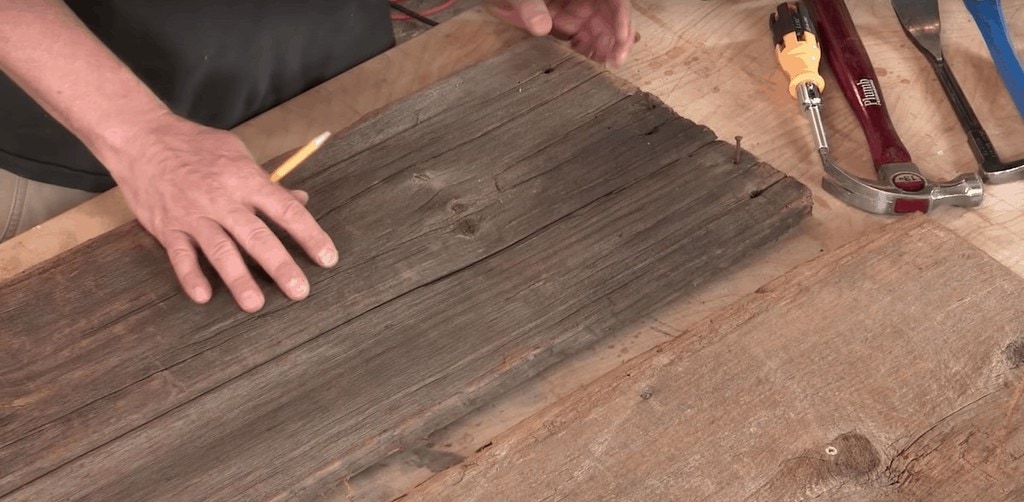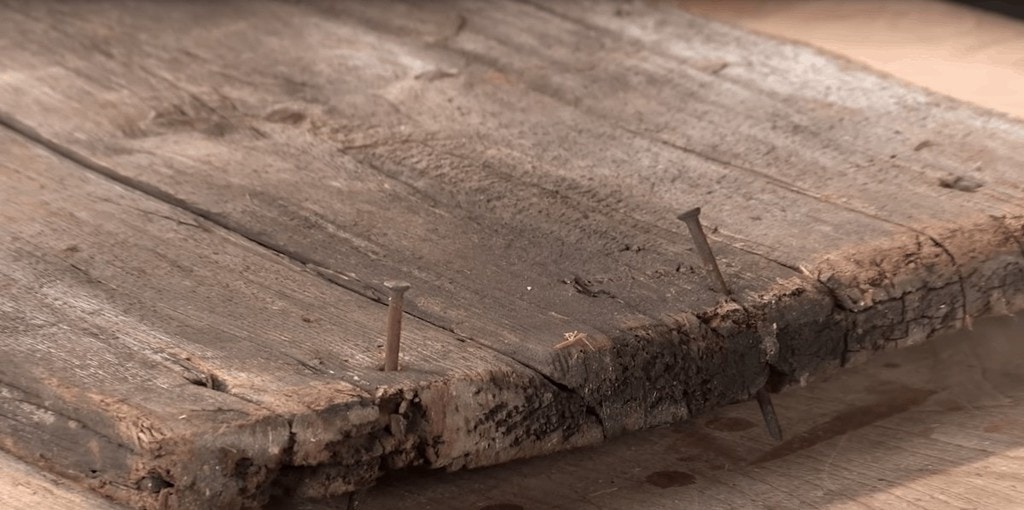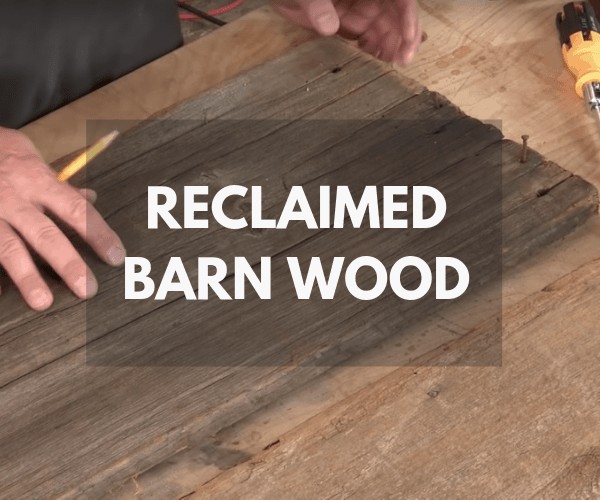
If you’re looking to complete a project with a rustic design, one of the materials you’ll most want to consider is reclaimed barn wood. This reclaimed wood is an excellent way to add character to a room. Below, we’ll provide you with a breakdown of everything you need to know about reclaimed barn wood so that you can decide if it’s worth using during your next project.
Table of contents
What is Reclaimed Barn Wood?
Reclaimed wood is a material that someone has reclaimed from its previous use, and “upcycled” it for future use. Although manufacturers can pull reclaimed lumber from sources like factories and warehouses, barns are one of the most popular options.
Many people choose to use reclaimed barn wood because of its appearance. It is processed, which means manufacturers treated it so increase its durability. However, because the wood was in a barn for dozens of years, it has a natural, weathered appearance. As much as they may try, manufacturers cannot replicate the natural appearance of reclaimed barn wood.
Most people tend to use it for decoration or home building projects. Projects in which you may typically see reclaimed barn wood include:
- A kitchen or living room remodel
- Replacing the siding of a home
- Cabinetry
- Flooring
- Furniture
What Type of Wood Is It?
There is no clear-cut answer as to the type of wood it is. However, much of the reclaimed barn wood in America is longleaf pine. Manufacturers often used longleaf pine during the Industrial Revolution because the trees grew tall and straight and because they were resistant to insects and mold.
At the time of the Industrial Revolution, longleaf pine was one of the most abundant wood sources in the country. Experts believe that there were once 140,000 square miles of longleaf pine across North America.
Other woods previously used when building barns were redwood and American Chestnut. Manufacturers on the west coast tended to use redwood, while those on the east cost tended to use American Chestnut.
Modern producers can no longer use either of these two trees when making wood, which is one of the most significant appeals of reclaimed barn wood. Because manufacturers cannot use either of these two trees to make new wood, the only way to obtain it is by using wood that’s been upcycled.
What Makes This Wood So Appealing?
In addition to the fact that it could provide access to rare materials, there are a few other reasons why people elect to use reclaimed barn wood.
One of the most significant reasons is that it contributes to green building. Many of the barns from which producers pull reclaimed barn wood are no longer in use. The wood is merely sitting there, serving no purpose. Instead of having to cut down trees to obtain wood for a project, this wood puts older wood to good use.
Additionally, it tends to stand out because of the character that it provides. Many people enjoy the fact that their wood “tells a story” and has a unique history. Similarly, most people tend to appreciate the rustic feel that reclaimed barn wood provides.
Many people also appreciate the flexibility that they receive when using reclaimed barn wood. You may find that it is available in wider planks than today’s lumber. This could allow you more flexibility when designing your project.
Lastly, this reclaimed wood is attractive because of its physical characteristics. Many people find that the wood is sturdy and durable. The fact that the planks are wider also tends to make the wood more stable.
People also believe the wood is durable because it has already been exposed to changes in humidity. Humidity can impact a wood’s strength. Because reclaimed wood has been outdoors for so long, it is not nearly as affected by humidity changes as fresh wood would be.
If reclaimed wood could withstand the wear and tear of a barn for hundreds of years, there’s no reason why the wood should not last in your home.
When Did Reclaimed Wood Become Popular?
Reclaimed barn wood grew in popularity over the past four decades. The movement to begin using reclaimed barn wood originated on the west coast in the early 1980s. Reclaimed barn wood grew in popularity in the 1990s when it reached the east coast.
Today, you may see reclaimed barn wood sold under monikers such as:
- Distressed lumber
- Antique lumber
- Recovered lumber
- Upcycled lumber
We should note that reclaimed barn wood is not the same as salvage logging. Reclaimed barn wood is wood that producers once created from a new tree. Salvage logging, on the other hand, is wood that comes from trees impacted by extreme environmental situations, such as floods and wildfires. Salvage logging is a way to make good use of the trees still so that all economic value is not lost.
So, reclaimed barn wood comes from trees that were once healthy. Once cut, the wood sat outdoors as part of a barn. Salvage logging, on the other hand, is new wood that did not sit outside after having been cut. However, the wood comes from trees that were potentially damaged during a natural disturbance.
Are There Problems with Using Reclaimed Barn Wood?
Like any project material, there could potentially be drawbacks when using reclaimed barn wood. Believe it or not, one of the most significant problems is that demand is too high for supply. You may think that there are hundreds of thousands of old barns throughout the country and that not many people would want to use this wood in their homes. However, this is not the case.
As this barn wood has risen in popularity, people have fought to get their hands on the material. The increased demand for the product then gives rise to another issue – the cost. This reclaimed wood could be quite expensive. Reclaimed barn wood is often more expensive than new lumber.
The cost of barn wood is not only because it’s in high demand, but because it has something that manufacturers cannot replicate – character and age. No matter how much they may try, there is no way to replicate the fact that reclaimed barn wood has been outdoors for hundreds of years.
Although it’s impossible to replicate reclaimed barn wood, manufacturers attempt to do so anyway. One of the other significant problems with reclaimed barn wood is that producers tend to pass new wood off as antique. It’s critical that before you buy it, you seek to find the origins of the material.
Another problem that you may run into when using this wood is that it tends to have metal pieces embedded in it. You may find things such as nails or other materials used in barns stuck in the wood. The embedded metal could make it challenging to work with or alter the lumber, as it could ruin materials such as planers.
The last significant concern when using this type of wood is that it can be challenging to pinpoint the source of the product. Often, experts misidentify the species of the wood. For some, this may not be a big deal.
The reason that experts struggle to identify the wood is that they cannot tell the species without cutting the wood. Obviously, cutting the wood would ruin its appearance. So, experts must make an educated guess as to the type of wood available.
Similarly, there is no way to tell how the barn owners treated the wood throughout its lifetime. No paper trails or documents indicate what substances the wood was once subject. Some people fear that reclaimed barn wood received lead paint or other stains that could be hazardous to your health. They are valid concerns if you wish to use the reclaimed wood indoors.
Where to Buy Reclaimed Barn Wood
If you’re looking to purchase reclaimed wood for your next project, you could be curious about where you can find it. Because the material has grown in popularity, there are many reclaimed lumber dealers and architectural salvage yards specializing in the sale of the wood. You may also find it for sale online.
Additionally, you could possibly find barn wood with a bit of old-fashioned “sleuthing.” Perhaps there’s a local demolition taking place near you where you could find old wood. You could also find an old barn on a property whose owner would love nothing more than for you to rid them of the eyesore.

Consider This Reclaimed Wood for Your Next Project
When completing a project that requires wood, you may want to consider using reclaimed barn wood. This wood could potentially be expensive, but it tends to be strong and durable.
Most importantly, it can provide your project with genuine character that you could not replicate otherwise. For those interested in completing a remodel with a rustic feel, finding reclaimed barn wood should be at the top of your list.


Thank you for all this helpful information.. one thing.. I have 100 year barn wood that I want to make into an island top.. what do u suggest i do with the top..i would love to keep look .. how do i seal it without loosing it and having to to sand it all away. Thank u dena